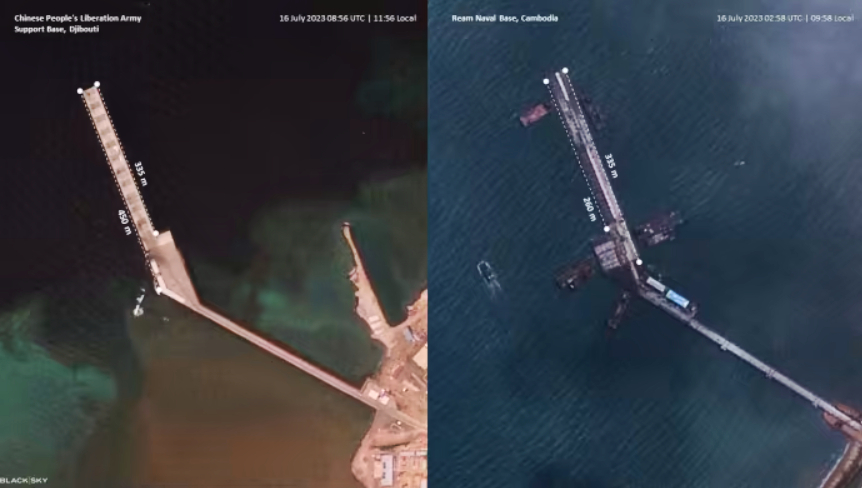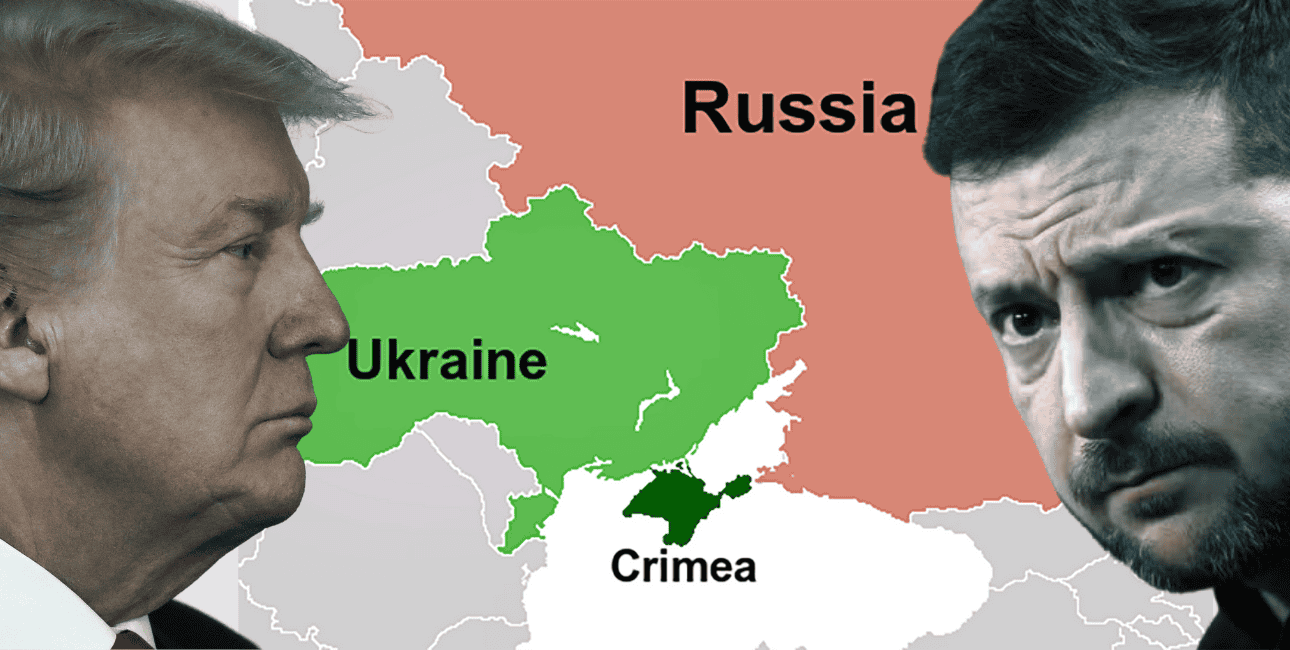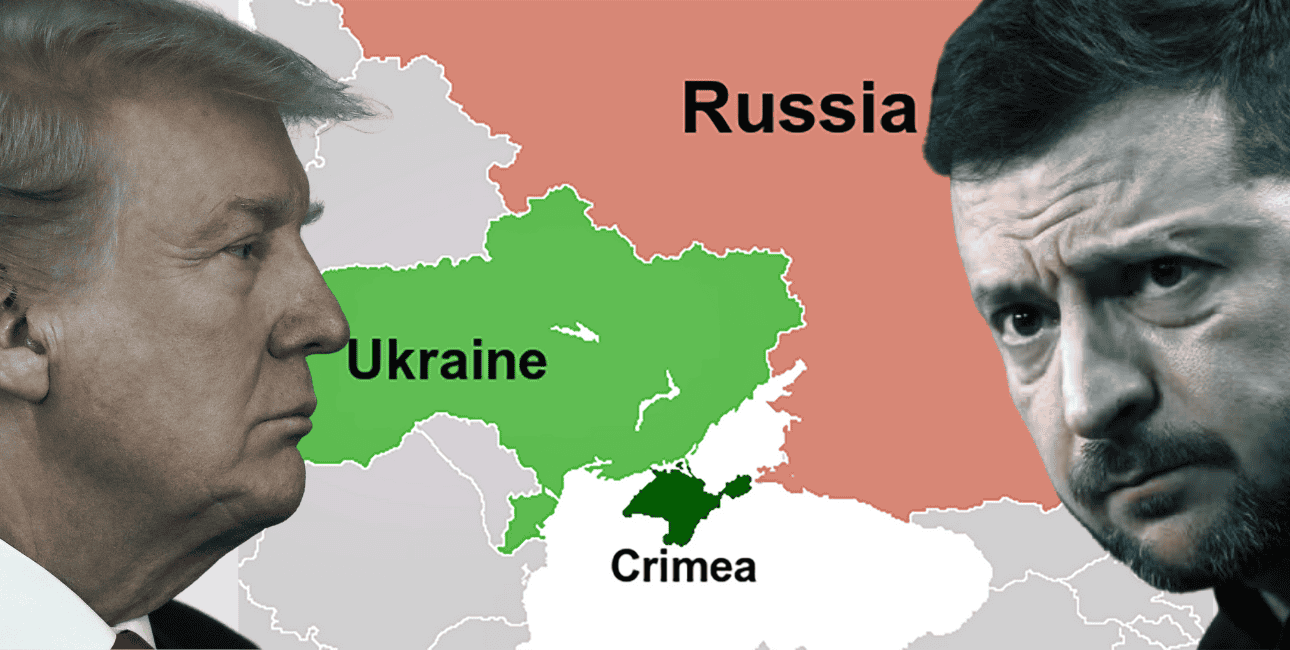Cambodia’s recently upgraded Ream Naval Base hosted two Japanese Maritime Self-Defense Force (JMSDF) vessels, Bungo and Etajima, on April 19, marking the first time foreign vessels had docked at the site since its upgradation with China’s funding.
The naval base was inaugurated earlier this month by Cambodian Prime Minister Hun Manet and a delegation from China’s People’s Liberation Army.
A few days later, Cambodia and China conducted joint military exercises, reflecting the close security cooperation between the two sides. The drills took place near the Ream base and included training in maritime operations and disaster response.
During the inauguration, Prime Minister Hun Manet stated that the base had “nothing to hide” and rejected suggestions that it would be used solely by Beijing. He stated that ships from other nations would also be welcomed.
The Bungo and Etajima were dispatched on a goodwill mission in January 2025 to visit 11 countries across Africa, the Middle East, South Asia, and Southeast Asia.
The Japanese Embassy in Phnom Penh described the visit as a significant moment in bilateral defense cooperation.
“We are aware that the Royal Government of Cambodia has been willing to make the base open to all the countries,” the embassy said.
In a subtle message to China, Miyoshi Asagi, Counsellor at the Embassy of Japan, said: “The journey of the two Japanese vessels underlines the importance of freedom of navigation, free and open international order based on international law, and its development.”

However, despite the fact that Japanese ships were the first foreign vessels to visit the Ream Naval Base, experts warn that the base will substantially increase Beijing’s influence and reach in the Gulf of Thailand and the South China Sea, which China claims almost entirely.
China’s Interests At Ream Naval Base
China has been deeply involved in upgrading the Ream Naval Base since 2022. The upgrades included a 300-meter-long deep-water pier, a 5,000-ton dry dock, a 1,000-ton slipway, office buildings, and a Cambodia-China Joint Logistics and Training Center.
While the Cambodian government has vociferously denied reports that the base will evolve into a permanent Chinese Naval Base, many Western policymakers and think tanks have expressed concerns and debated what specific privileges the Chinese People’s Liberation Army Navy (PLAN) will enjoy at the base.
Ream Naval Base and China’s role in it first became the topic of sustained media attention in 2019, when The Wall Street Journal reported that Cambodia had signed a secret agreement with Beijing that granted the People’s Liberation Army Navy (PLAN) the right to use the base for the next 30 years.

Cambodia’s government has repeatedly denied these reports.
Even during the inauguration ceremony earlier this month, Prime Minister Hun Manet said: “I want to take this opportunity to clarify clearly that Cambodia, under the leadership of the Cambodian People’s Party government, has no intention – whether in the past, present, or future – of violating its own constitution by allowing any country or military to establish an exclusive base on Cambodian soil.”
However, even if Ream Naval Base does not become a full-fledged Chinese military base, Beijing has gained influence and preferential access to the strategic base.
Questions remain about how the Cambodia-China Joint Logistics and Training Center will operate. Cambodian officials have said that the center will host the annual Golden Dragon joint military exercises. This year’s Golden Dragon military exercise kicked off a few days after the inauguration.
In a statement in state-run Global Times, China’s Ministry of National Defense said that while the Joint Logistics and Training Center was not “aimed at any third party,” “necessary personnel from both countries” will be based at the center to ensure its “smooth operation.”
Zhang Junshe, a Chinese military affairs expert, told the Global Times that the center has two core functions: joint support and joint training.
“The center will also host joint training exercises to enhance coordinated military operation capabilities of the two militaries, enabling them to jointly address regional security threats,” he added.
The continued presence of Chinese military officials at the center, along with the annual military drills, indicates that the Chinese military will have permanent access to the base.
This access also raises the possibility of intelligence gathering. From Ream, Chinese systems might monitor air and sea activity in nearby southern Vietnam. With advanced radar systems and potential data-sharing agreements with Cambodian forces, China could quietly collect information without setting off alarm bells.
Access to a base like Ream allows China to stretch its naval reach and quietly tighten its grip on the region’s maritime routes. The location, tucked along Cambodia’s southern coast, will provide China with easy access to the Malacca Strait, a crucial chokepoint through which approximately 80% of China’s oil imports and a significant portion of its LNG imports pass.

Besides, in case of a regional conflict in the nearby South China Sea, Beijing can swiftly beef up its military presence at the Ream Naval Base. Also, Beijing could utilize the facility to block the Malacca Strait and prevent any possible reinforcements for its enemies via this vital route.
A Hong Kong-based analyst, Brian Wong, told the South China Morning Post that the Chinese-sponsored upgrades to the base are part of Beijing’s larger strategy to de-risk supply lines, break marine chokepoints, and diversify regional maritime access as part of the Belt and Road Initiative.
All of this suggests that Beijing will maintain a small but permanent presence at the Naval Base.
Also, the Chinese military presence at the Ream Naval Base in Cambodia is by no means an isolated occurrence. Instead, it fits the pattern of multiple dual-use infrastructure development projects in Cambodia that Beijing has undertaken in the last decade.
Prominent among them are the Dara Sakor International Airport (3,900-meter runway) project, Siem Reap Angkor International Airport, the Mekong canal, Kampot Logistics and Port, the Phnom Penh-Sihanoukville Expressway, and the Sihanoukville Special Economic Zone.
Under its Belt and Road Initiative (BRI), China is focusing on building multiple strategic dual-use infrastructure projects in Cambodia. These projects align with President Xi Jinping’s concept of ‘civil-military fusion’ to enhance China’s military capabilities. A mandatory requirement for BRI projects in numerous recipient nations is for Chinese overseas projects to meet military standards.
According to research by Observer Research Foundation, of the US$15 billion invested in Cambodia under the BRI, China-funded projects worth US$9.6 billion have followed dual-use implementation methodologies in their construction.
These developments have raised concerns in Hanoi and Washington, China’s regional rivals in the Gulf of Thailand.
Notably, the strengthening of cooperation between Cambodia and China has coincided with a deteriorating relationship between Cambodia and the US.
For instance, a US defense attache was denied full access to the Ream Naval Base during an invited visit in 2021. Additionally, several US-funded buildings were demolished as part of a planned upgrade initiated by China. Cambodian officials, however, clarified that China had no involvement in the demolitions.
The US and Cambodia had held military drills at the Ream Naval Base before its upgradation was kick-started in 2022. However, over the course of its construction, the two sides have become increasingly alienated.
China’s Expanding Network Of Military Bases
While China boasts a massive naval fleet, the PLA Navy remains constrained by the lack of a worldwide network of bases and logistical support.
When it comes to overseas military bases, China is far behind the US. Beijing is aware that it needs a vast network of naval bases to exert global dominance and become a true Blue Water Navy.
China’s People’s Liberation Army Navy (PLAN) currently has only one overseas military base, located in Djibouti, on the Horn of Africa coast. However, Beijing has multiple dual-use ports and naval facilities in Asia and Africa.

Hambantota in Sri Lanka, Bata in Equatorial Guinea, and Gwadar in Pakistan are such dual-use facilities that enhance PLAN’s power projection capabilities. Ream Naval Base fits into this pattern of developing multiple strategically located dual-use port facilities near crucial maritime trade routes and chokepoints.
These facilities provide China with preferential access, a small but permanent military presence, and intelligence-gathering opportunities, without generating the negative press that comes with establishing a permanent military base in an overseas territory.
- Sumit Ahlawat has over a decade of experience in news media. He has worked with Press Trust of India, Times Now, Zee News, Economic Times, and Microsoft News. He holds a Master’s Degree in International Media and Modern History from The University of Sheffield, UK.
- He can be reached at ahlawat.sumit85 (at) gmail.com






